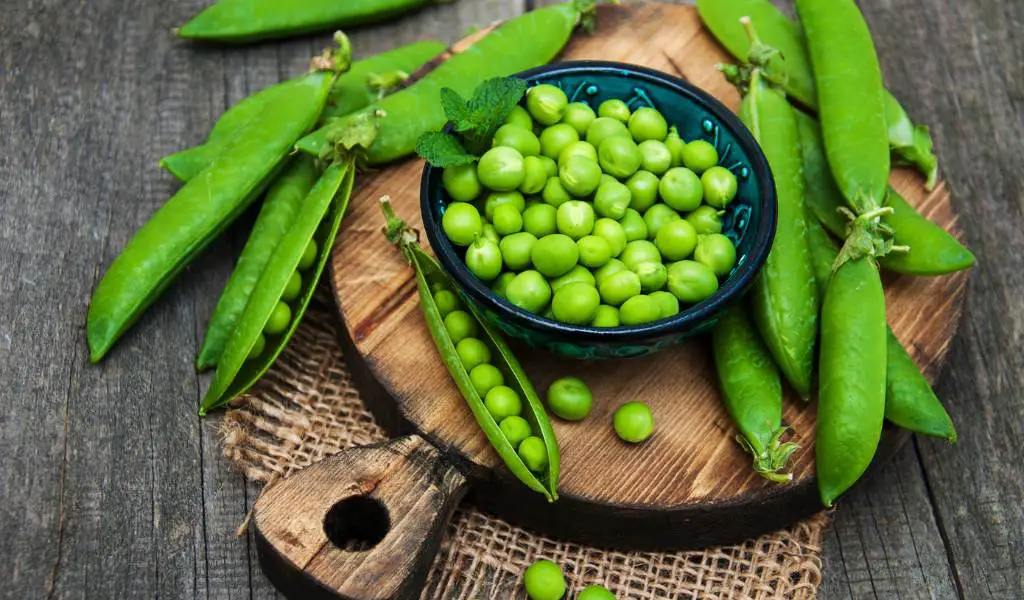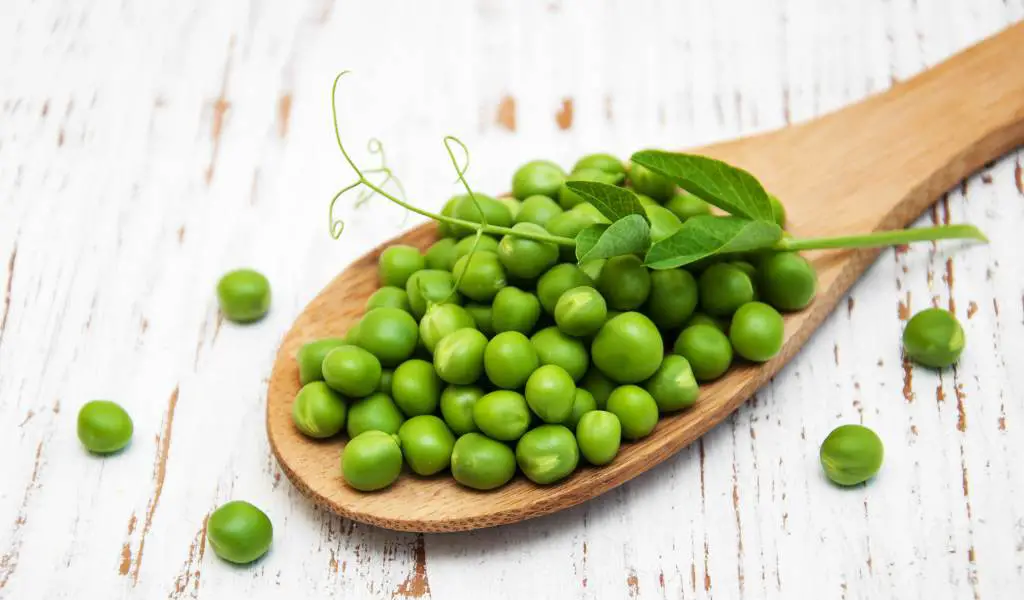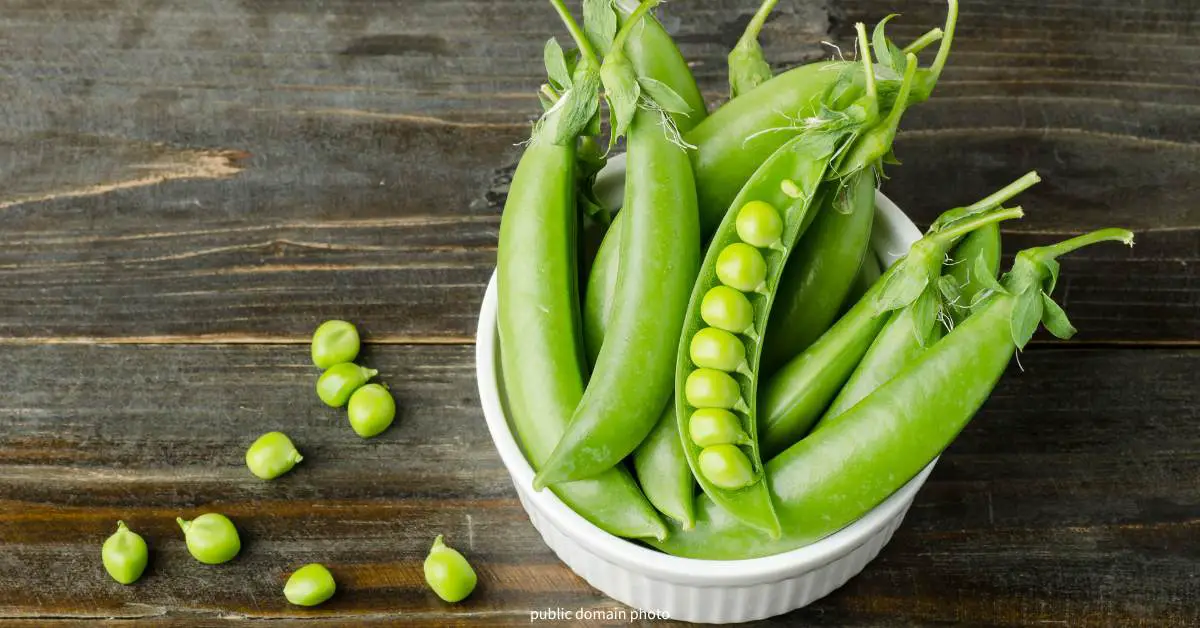If you’re struggling with histamine intolerance, you know how complex meal planning can be. Unless you choose low-histamine foods, you can experience unpleasant symptoms like hives, headaches, and digestive issues.
Selecting low-histamine foods is akin to steering your culinary voyage away from stormy seas.
Histamine intolerance sufferers must carefully evaluate the histamine levels of ingredients when cooking. This leads many to wonder: are peas allies or adversaries when it comes to histamine intolerance? In other words, are peas high in histamine?
Are There Histamines in Peas?
Although there are few studies that have directly measured the histamine content of peas, there are insights from the SIGHI list. SIGHI stand for the Swiss Interest Group for Histamine Intolerance, an organization dedicated to providing information and support for people dealing with histamine intolerance. (3) They put together a helpful list of foods categorized by their histamine levels.
As an organization devoted to histamine intolerance, they know how challenging it can be to figure out what foods work with your body’s sensitivities. Their list makes it so much easier to make the right dietary choices. Foods are divided into sections from low to very high histamine. That way you can choose foods that are safer bets if histamine is a problem for you. The list is a great reference to help identify triggers and make meals more histamine friendly.
SIGHI Insights on the Histamines in Peas
Based on the SIGHI guidelines, most peas seem to be okay in moderation for people with histamine issues. Green peas, green split peas, snow peas and yellow split peas are rated as a 1, meaning they’re considered moderately histamine friendly.
Other types of peas like dry peas, cow peas and pigeon peas are ranked as a 2, so they may be more problematic for some folks. Still, they aren’t flagged as high histamine.
I noticed the Histamine Intolerance Site specifically calls out yellow peas as “medium” in histamine, so that’s something to keep in mind. Their ratings may differ slightly from the SIGHI list.
The takeaway seems to be most peas are decent bets, but yellow peas might be worth eating sparingly if histamine is a concern for you. It’s smart to pay attention to your individual reactions too. We all tolerate foods differently. Plus, some people have other food sensitivities, beyond histamine intolerance ,that make certain foods off limits.

Are There Other Biogenic Amines in Peas?
Histamine is one type of biogenic amine, but there are others. If you have histamine intolerance, you may also be sensitive to other biogenic amines. Studies show that non-fermented plant-based foods may contain histamine or other biogenic amines. Some of the best examples are eggplant, avocado, tomato, spinach, and citrus fruits. (2)
Based on the current evidence, biogenic amines in peas are a potential concern. (4) For example, in peas, biogenic amines like tryptamine, tyramine, and even histamine have been linked to potential off-flavors and limited acceptability in food products made with peas. Not ideal if you’re trying to sell pea-based foods to customers. (4)
Here’s another fascinating thing – in your gut, dietary amines from peas may have beneficial effects by stimulating the gut and improving blood flow. (5) The receptors involved are different than the usual suspects like histamine and serotonin. Science is constantly showing us the marvels and complexity of the human body.
So, in summary, while biogenic amines play important biological roles, high levels may lead to undesirable impacts like off-flavors and food poisoning, especially if you can’t break down biogenic amines quickly.
Are Peas High in Histamine: Individual Responses May Vary
As you know, we all react differently to foods, even ones considered “low” histamine. Green peas might be fine for some folks with histamine issues, but cause problems for others.
I think it’s important not to take any food list as gospel, since our bodies are so unique. What gives you a reaction might not bother me at all. The SIGHI and other sites try to categorize based on common responses, but there can be a ton of individual variance.
Lists, like the SIGHI list, offer guidelines to experiment with. Reactions vary so much person-to-person. The key is paying attention to how you feel and honoring your own intolerances. At the end of the day, we each must figure out what works for our bodies through trial and error. No list can replace listening to your individual reactions. This kind of self-awareness is invaluable.
As a physician who has worked with people who have histamine intolerance, more than half of them say they can tolerate green peas. It’s less common for people to eat yellow peas, so I don’t have as much data on those. Always try small quantities of peas and see how you respond. Of course, you should also keep a food diary, so you know whether peas trigger histamine intolerance symptoms.

Histamine Intolerance and Peas
When it comes to histamine intolerance, few foods provoke more confusion than peas. Are they safe? Or risky? The answer lies somewhere in between. The relationship between peas and histamine is nuanced.
Peas contain some histamine, but not sky-high amounts and they also contain other biogenic amines. For many with histamine intolerance, peas in moderation may be tolerable. However, individuals vary in sensitivity. Some react strongly even to trace histamines.
Others handle moderate amounts just fine. When it comes to peas specifically, there are no hard and fast rules. Get curious, take notes, and find what works for you. With knowledge and self-awareness as your guides, you can build confidence in customizing your own antihistamine diet.
References:
- Wójcik W, Łukasiewicz M, Puppel K. Biogenic amines: formation, action and toxicity – a review. J Sci Food Agric. 2021 May;101(7):2634-2640. doi: 10.1002/jsfa.10928. Epub 2020 Dec 12. PMID: 33159318. https://pubmed.ncbi.nlm.nih.gov/33159318/
- Sònia Sánchez-Pérez, Oriol Comas-Basté, Judit Rabell-González, M. Teresa Veciana‐Nogués, M. Luz Latorre‐Moratalla, and M. Carmen Vidal‐Carou. “Biogenic Amines in Plant-Origin Foods: Are They Frequently Underestimated in Low-Histamine Diets?” Foods 7, no. 12 (December 14, 2018): 205–5. https://doi.org/10.3390/foods7120205.
- Mastcellaction.org. “Swiss Interest Group Histamine Intolerance (SIGHI) | Mast Cell Action,” 2022. https://www.mastcellaction.org/articles/swiss-interest-group-histamine-intolerance-sighi.
- Ongkowijoyo P, Tello E, Peterson DG. Identification of a Bitter Peptide Contributing to the Off-Flavor Attributes of Pea Protein Isolates. J Agric Food Chem. 2023 May 17;71(19):7477-7484. doi: 10.1021/acs.jafc.3c00435. Epub 2023 May 4. PMID: 37141411.https://pubmed.ncbi.nlm.nih.gov/37141411/
- Ongkowijoyo P, Tello E, Peterson DG.Effects of Dietary Amines on the Gut and Its Vasculature. Broadley KJ, Akhtar Anwar M, Herbert AA, et al. The British Journal of Nutrition. 2009;101(11):1645-52. doi:10.1017/S0007114508123431. https://pubmed.ncbi.nlm.nih.gov/10702995/


